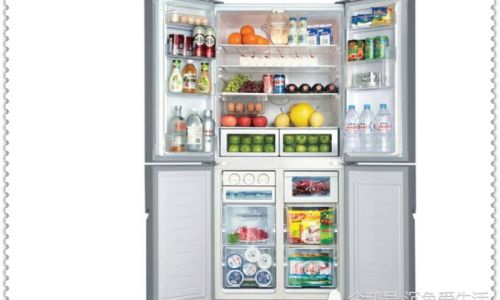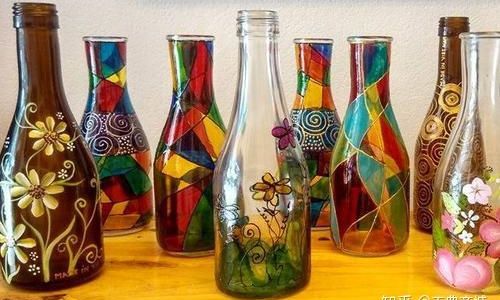Introduction
The question of whether glass cups can safely withstand the extreme cold of a freezer is one that has puzzled home cooks, bartenders, and everyday users for decades. While glassware is a staple in kitchens worldwide, its susceptibility to thermal shock—the rapid change in temperature that can cause materials to crack or shatter—has led to widespread confusion. This article delves into the science behind glass and freezing temperatures, explores the risks and benefits of storing glass cups in freezers, and provides actionable advice to ensure safety and longevity. By examining factors such as glass composition, manufacturing processes, and real-world use cases, readers will gain a thorough understanding of how to handle glassware in cold environments.
The Science of Glass and Temperature Changes
Glass, an amorphous solid composed primarily of silica (silicon dioxide), exhibits unique physical properties that differentiate it from crystalline materials like metals or ceramics. Unlike metals, which expand uniformly when heated and contract when cooled, glass lacks a ordered atomic structure. This characteristic makes it prone to uneven expansion and contraction when exposed to rapid temperature fluctuations, a phenomenon known as thermal shock.
When a glass cup is placed in a freezer, the extreme cold causes the molecules within the glass to slow down and contract. If the glass is then exposed to a sudden temperature change—such as adding a hot liquid or moving it to a warm environment—the outer layers of the glass may expand faster than the inner layers, creating internal stress. If this stress exceeds the glass’s tensile strength, it can result in fractures or explosions.

Types of Glass and Their Freezer-Safety Ratings
Not all glass is created equal. Manufacturers produce glassware using various formulations, each tailored to specific applications. Understanding these differences is critical to determining freezer safety:
-
Soda-Lime Glass: The most common type of glass used in household items like cups, jars, and drinking glasses, soda-lime glass contains sodium carbonate and lime. While affordable and durable for everyday use, it has a relatively low thermal shock resistance. Sudden temperature changes, such as moving a soda-lime glass cup directly from the freezer to a microwave, increase the risk of breakage.
-
Borosilicate Glass: Often marketed as “heat-resistant” or “tempered” glass, borosilicate glass incorporates boron trioxide, which lowers its coefficient of thermal expansion. This makes it far more resistant to thermal shock than soda-lime glass. Brands like Pyrex (in some regions) and Duralex use borosilicate glass for bakeware and storage containers, which are often labeled as freezer-safe.
-
Tempered Glass: Treated with thermal or chemical processes to increase strength, tempered glass is designed to shatter into small, rounded pieces rather than sharp shards. While tempering enhances mechanical durability, it does not inherently improve resistance to thermal shock unless combined with borosilicate formulations.
-
Laminated Glass: Typically used in automotive or architectural applications, laminated glass consists of layers bonded with plastic interlayers. This construction improves safety but is irrelevant to freezer storage.
Key Takeaway: Borosilicate glass is the safest option for freezer use due to its low thermal expansion rate. Soda-lime glass, while suitable for gradual temperature changes, poses higher risks in extreme or abrupt conditions.
Risks of Placing Glass Cups in the Freezer
Despite the allure of storing beverages or leftovers in glass for its non-porous and eco-friendly properties, freezing glass cups carries inherent risks:
-
Thermal Shock: As discussed, rapid cooling or uneven temperature distribution can cause cracking. For example, filling a cold glass cup with boiling water after removal from the freezer is a recipe for disaster.
-
Liquid Expansion: Freezing liquids inside glass cups adds another layer of risk. Water expands by approximately 9% when frozen, exerting immense pressure on the glass walls. If the liquid volume exceeds the cup’s capacity or the glass has microscopic flaws, shattering is likely.
-
Physical Damage: Glass cups knocked over in the freezer or subjected to impacts from other frozen items may develop hairline fractures invisible to the naked eye. These cracks can propagate during subsequent freezing cycles, leading to failure.

-
Freezer Malfunction: In rare cases, severe glass breakage can damage freezer components, such as coils or shelves, necessitating costly repairs.
Factors Influencing Freezer Safety
Several variables determine whether a glass cup will survive freezing:
-
Glass Thickness: Thicker glass generally withstands thermal stress better than thin glass. However, thickness alone does not guarantee safety; composition remains paramount.
-
Manufacturing Quality: Glassware produced under strict quality control standards is less likely to contain imperfections like air bubbles or inclusions, which act as stress concentrators.
-
Pre-Freezing Condition: Glass cups with existing scratches, chips, or cracks are significantly more vulnerable to breakage. Always inspect glassware before freezing.
-
Freezer Environment: A crowded freezer with poor air circulation may subject glass cups to uneven cooling. Leave adequate space around items to promote consistent temperature distribution.
Best Practices for Freezing Glass Cups Safely
While no glass is entirely immune to thermal shock, adhering to these guidelines minimizes risks:
-
Use Borosilicate Glass: Prioritize freezer-safe borosilicate containers labeled explicitly for low-temperature use. Avoid using delicate soda-lime glassware unless absolutely necessary.
-
Avoid Sudden Temperature Changes: Allow glass cups to adjust to room temperature before freezing. Similarly, thaw frozen glass gradually in the refrigerator, not at room temperature or under hot water.
-
Leave Headspace: When freezing liquids, fill the cup no more than 80–90% full to accommodate expansion. Use plastic lids or parchment paper to cover the opening, preventing contamination while allowing pressure release.

-
Avoid Microwaving After Freezing: Never microwave a glass cup directly after removing it from the freezer. The rapid heat transition amplifies thermal shock risks.
-
Handle with Care: Place glass cups on stable surfaces in the freezer to prevent tipping. Avoid stacking heavy items on top of them.
-
Inspect Regularly: Periodically examine frozen glass cups for condensation or frost buildup, which may indicate compromised seals or structural weaknesses.
Alternatives to Freezing Glass Cups
For users hesitant to risk glass breakage, several alternatives offer comparable convenience:
-
Freezer-Safe Plastic: Polypropylene (PP) and high-density polyethylene (HDPE) containers are lightweight, shatterproof, and explicitly rated for freezer use. However, they may absorb odors and stains over time.
-
Silicone Molds: Flexible, non-stick silicone containers are ideal for freezing small portions. They withstand extreme temperatures and are easy to clean.
-
Stainless Steel: Insulated stainless steel tumblers can pre-chill beverages without the risks associated with glass.
-
Ceramic Containers: Some ceramic dishes are freezer-safe, though they share glass’s susceptibility to thermal shock.
Case Studies: When Glass Cups Fail in Freezers
Real-world incidents underscore the importance of cautious glass handling:
-
Home Kitchen Accident: A user placed a soda-lime glass jar filled with tomato sauce in the freezer. Upon removal, the jar cracked along the base, spilling frozen sauce and staining the freezer shelf.

-
Bar Industry Mishap: A bartender froze a borosilicate glass mixing cup overnight. While pouring a warm cocktail, the sudden temperature change caused a hairline fracture to propagate, resulting in minor lacerations.
-
Commercial Food Service: A restaurant stored homemade soup in unmarked soda-lime glass jars. During defrosting, one jar shattered, contaminating other frozen items with glass shards.
These examples highlight that even “freezer-safe” glass requires mindful usage.
Debunking Myths About Glass and Freezers
Several misconceptions persist regarding glassware and freezing:
-
Myth 1: “All glass is freezer-safe.”
Reality: Only borosilicate or tempered glass labeled as freezer-safe is suitable. Soda-lime glass risks breakage. -
Myth 2: “Thicker glass is always safer.”
Reality: Thickness helps, but composition matters more. A thin borosilicate cup may outperform a thick soda-lime one. -
Myth 3: “Freezing glass extends its lifespan.”
Reality: Repeated freezing and thawing can fatigue glass, leading to gradual weakening. -
Myth 4: “Glass won’t break if it’s dry.”
Reality: While liquids exacerbate expansion, dry glass can still crack due to thermal shock.
Conclusion
The question of whether glass cups belong in the freezer hinges on a nuanced interplay of material science, user behavior, and risk tolerance. While borosilicate glass offers the highest safety margin, no glassware is entirely impervious to thermal shock. By selecting appropriate containers, adhering to gradual temperature transitions, and prioritizing regular inspections, users can mitigate risks and enjoy the benefits of glass—clarity, non-reactivity, and sustainability—without compromising safety. When in doubt, opt for alternatives like freezer-safe plastics or silicone, or consult the manufacturer’s guidelines. Ultimately, informed caution remains the best policy in navigating the cold confines of the freezer.






0 comments